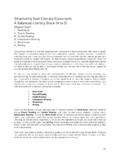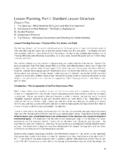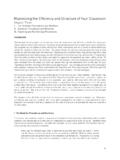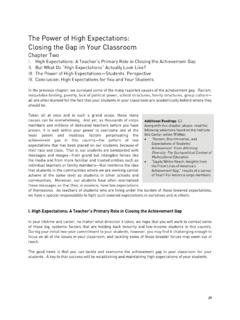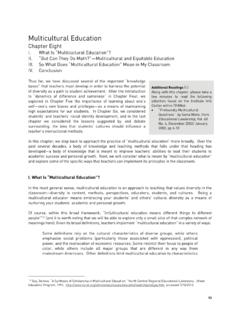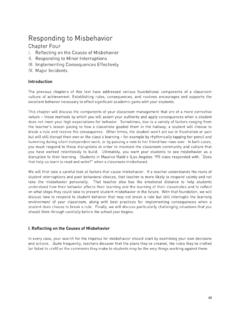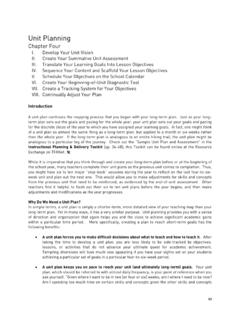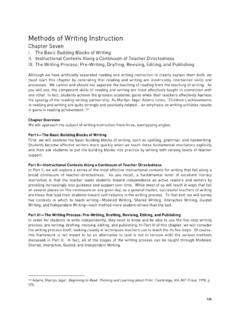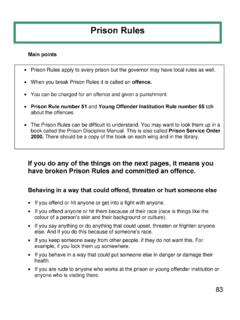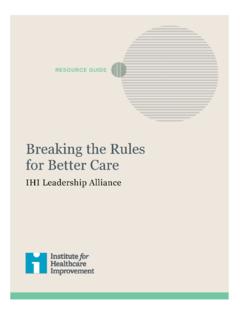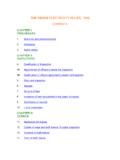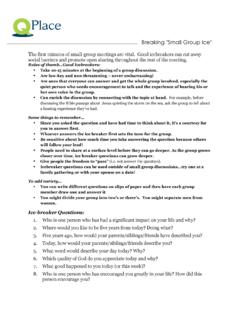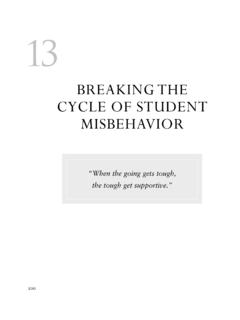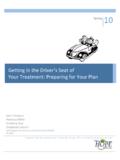Transcription of Creating and Implementing Effective Rules and …
1 Creating and Implementing Effective Rules and consequences Chapter Two I. Determining Rules II. Determining consequences III. Teaching Expectations IV. Reinforcing Good Behavior Introduction Classrooms are unpredictable places. On the first day of school, students do not know when they can go the bathroom, if they will be punished for leaving their seats, or how the person at the front of the room will treat them all year. At any moment, the fire alarm could ring, the intercom could blare with announcements, someone could start a fight, the overhead lamp could blow, a child could have a seizure, an administrator could ask you to step out into the hall during your lesson.
2 These and a host of other distractions and dangers create a lot of potential areas for confusion and rather unsafe feelings for children. Of course, older children have had to process more cumulative expectations than kindergartners who are entirely new to the culture of school, but the fundamental issue remains: if there is a doubt about expectations for behavior in the classroom, students may develop their own patterns for behaving. As a wise teacher once said, if you don't have a plan for your students, they will have a plan for you.
3 Determining Rules and consequences , teaching them to students and outlining the benefits of working within them, is a critical up-front investment of a new teacher's time and energy. These pieces of your classroom management plan help promote appropriate student behavior, prevent student misbehavior and create a sense of order and predictability in your classroom. Rules , and your explanation of them, tell students how you expect them to behave. consequences outline what would happen if students chose to break the Rules .
4 Strategies for reinforcing good behavior, both intangible and tangible, bolster a student's desire to make the right behavioral choices and follow your Rules . This chapter will address the components of proactive behavior management. First, we will discuss the characteristics of Effective Rules and consequences . We will also explore factors to keep in mind when determining the Rules and consequences for your particular classroom. Then, we will examine how to best teach those Rules and consequences to your students.
5 Finally, we will consider the importance of reinforcing good behavior through intangible, and sometimes tangible, rewards. These three steps, together with the implementation of classroom procedures discussed in chapter three (for example, the specific process you teach your students for how to enter the classroom or how to move from one station to the next) are prerequisites to Creating a predictable, secure classroom that meets students' basic needs for safety and routine and gets you one step closer to Creating a culture of achievement.
6 Always remember that good behavior is a means to an end, not an end itself. Your expectations for student behavior must support your broader vision for student achievement, your ultimate end. To see how some teachers present their Rules , consequences , and procedures to students as means to a culture of achievement, look at Class Expectations in the Classroom Management & Culture Toolkit (pp. 1-5); this Toolkit can be found online at the Resource Exchange on TFANet. #. 15. Effective Rules and consequences I.
7 Determining Rules Establishing explicit behavioral expectations entails outlining Rules , consequences , and Rules and consequences so that students understand exactly Procedures what behaviors are allowed and what behaviors are prohibited. Because Rules and consequences need to This first step toward helping your students meet their be established before procedures, and behavioral potential is worth a considerable investment of procedures are often built from and energy early on; setting Rules and consequences minimizes the aligned with the classroom Rules , we need for other types of more corrective discipline ( , actually chose to address Rules and consequences Implementing the consequences ).
8 Before procedures in this text. As mentioned in the introduction, Determining Appropriate Rules procedures are another essential element of any classroom management Rules are general standards of conduct and should apply to plan. The next chapter will take an in- student behavior in all classroom situations, regardless of the depth look at how to establish and teach activity. In that way, Rules are distinct from procedures, which procedures. outline specific behaviors during a particular type of activity.
9 Consider the reflection of a former '00 corps member from the Rio Grande Valley: My worst rule was a requirement that students always raise their hands before speaking. I quickly realized it wasn't important or appropriate for students to always raise their hands, for example during cooperative groups or whole-class brainstorm discussions. Students were unclear about what I expected, and this lack of consistency undermined my whole system. I took it off the list of Rules for non-negotiable behavior, and instead created a set of procedures to teach students what I expected during different, specific activities.
10 When crafting classroom Rules , keep in mind three general guidelines: x Phrase your Rules in the form of a positive statement. x State your Rules clearly. x Minimize your list of Rules (most teachers have 3-5 Rules ). The following table gives examples of Rules that do and do not meet these guidelines: Characteristics Rationale Examples to Follow Examples to Avoid 1. Rules should be in the Positive Rules explain what Respect your classmates in No disrespectful form of a positive students should be doing.
